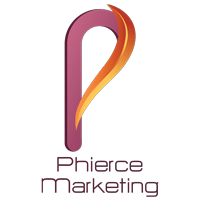For businesses large and small, marketing is a critical part of lead generation, conversion, and sales. After all, without effective marketing, consumers who would ordinarily be interested in a company’s offerings would have no idea the company, product, or service even existed.
If you’re exploring your marketing options, you have probably come across the term “inbound marketing” and while you might have an idea of what this could mean, you probably want more information.
Fortunately, this entire guide covers inbound marketing; what it is, how it works, the benefits it provides, and tips on how to get started with your own inbound marketing strategy. Read on to learn more about what sets inbound marketing apart from other marketing methods.
What is Inbound Marketing?
In simple terms, inbound marketing is a method of content marketing that draws in customers by offering them content they actually want. This is opposed to outbound marketing which can sometimes miss the mark when it comes to offering customers valuable information. Inbound marketing works to make meaningful connections with individuals who are looking for answers to a problem they’re facing.
Inbound marketing is unique in its approach, as it is designed to present the information that consumers seek as easily and conveniently as possible. It accomplishes this goal by presenting the sort of content a consumer is already looking for instead of reaching out to individuals who may or may not be interested in what’s being offered.
Outbound marketing, for example, can take the form of those unsolicited mailers nobody wants to find in their mailboxes, pop-up ads, and cold calls.
Inbound marketing, on the other hand, provides answers to questions or solutions to a problem. When an individual keys a search query into Google, the most relevant results that populate at the top of the page are a good example of inbound marketing.
When a consumer receives pop-up ads out of the blue that ask, “are you interested in Product X,” or “do you want to use Service Y,” the consumer is interacting with outbound marketing.
When a consumer uses a search engine to find, let’s say, solutions that help them practice effective oral hygiene despite having sensitive gums, the blog posts and guides that attempt to inform them are using inbound marketing to do so.
It’s easy to understand how one of those approaches would be better received than the other. Around 80% of decision-makers agree, stating that they prefer learning about a brand, product, or service through a series of articles instead of a series of ads.
Nobody likes to be bombarded with ads, especially when they’ve got something entirely unrelated on their minds at the moment. Marketers who specialize in using inbound methods not only understand this preference but seek to implement it into the way they attract new customers.
What Are the Benefits of Inbound Marketing?
Think about inbound marketing from a customer’s perspective. If you were looking for a solution for an issue you’re dealing with, you’d likely appreciate valid options far more than having your time wasted on content that doesn’t help you.
That’s the most basic benefit of inbound marketing and what sets it apart from other marketing methods. Content that matters to a potential customer is going to draw them in. In fact, 47% of B2B customers consume 3-4 pieces of content before deciding to speak to a member of the company’s sales team. Also, over half of B2B marketers note that organic web searches were the primary resource that led them to a helpful solution.
Most consumers value the idea that they’re understood and appreciated, as more than 60% of them have stated that they prefer when companies provide them with customized content that meets a direct need.
Inbound marketing practices provide marketers and consumers alike with a valuable way to connect. Marketers attract customers looking for their help and customers save time when searching for the information, products, or services they need.
On top of the conveniences possible through inbound marketing, another benefit worth noting is the cost. Inbound marketing costs roughly 61% less than outbound marketing and over 40% of marketers worldwide say that inbound marketing has generated noticeable returns on their marketing investments.
The Inbound Marketing Process
Part of what makes inbound marketing so effective is the process behind it. Unlike outbound marketing which seeks to go searching for customers and reel them in with your company’s content, inbound marketing does the opposite.
Think about inbound and outbound processes as food items available at a high-end event.
Outbound marketing would be similar to a waiter constantly approaching guests and offering them cocktail hotdogs or quiche from a shiny tray when they’re trying to listen to the event’s speaker.
In this same setting, inbound marketing would be like a clearly-labeled buffet table that offers guests a variety of things to eat when they’re actively looking for it. Rather than bothering them, the buffet table is posted as a solution that will help a hungry guest. When they know they want something to eat, they know where to go and all of the options available are on display.

1 – Attract
Inbound marketing can be used to attract the right customers to a company’s content or service offerings by presenting them with valuable content. By providing valuable content, inbound marketers work to establish themselves as an authority on a specific topic. In doing so, they make it much easier for consumers to trust the company and its content.
If the food at an event still applies here, the attracting aspect would take the form of the well-lit, easy-to-see sign hovering over the buffet table, or the smell of all the food items wafting through the room.
2 – Convert
After attracting a potential customer, inbound marketing converts customer leads by presenting a fast, simple solution for a pain point the customer is dealing with. Customers usually prefer when a solution comes by easily, instead of having to scour the internet for help. For example:
“Do you experience [Problem A]? Well, you’ve come to the right place because we’ve got [Solution A] for you! Here’s how it works.”
The message above is a simplified version of an inbound marketing strategy.
In the event scenario, the conversion element would be the buffet offering itself. The consumer or guest would realize that he or she is hungry, and they’d decide to go get something to snack on from the buffet table based on the display in front of them.
3 – Close
Once marketers have converted a lead, provided the information they’re looking for, and secured a purchase, they only need to close the sale, provide the product or service, and (if needed) keep the customer coming back.
Once again returning to the event example, closing occurs when the guest has left the buffet table with a plate of food and they’re sitting down to sample the different items they brought back.
4 – Delight
To keep the customer returning to a specific company for all of their related needs, providing continuous support makes it easy for them to continue finding the solutions they need.
Finally, in the last example of the event scenario, the delight segment occurs when the consumer has tried what they wanted at the buffet table, they like what they ate, and they’re going back for more.
How Can I Get Started with Inbound Marketing?
An inbound marketing strategy may look a little different from one company to the next, but generally, inbound marketing strategies should work toward the same goal. That goal is getting customers to visit your site, read your content, and make a purchase. However, unlike outbound marketing, your inbound strategy should be designed with the convenience of your customers in mind.
To get started, let’s look at the three main elements you’ll need to focus on when creating an inbound marketing strategy. Keep in mind, depending on the size of a company and the depth of its marketing efforts, there may be additional elements to focus on when creating a marketing strategy.
Create Buyer Personas
Buyer personas are a way for marketers to create a representation of their target audiences. To create them, marketers need to note down the qualities their ideal customers would have and the demographics they’d be a part of. This fictional buyer persona is used as a sort of “stand-in” for the real customers that visit a business.
Your buyer personas should include the customer’s motivations, goals, challenges, behaviors, and demographic information. A detailed, well-planned persona helps marketers develop content that adequately reaches real customers.
To create your own, ask yourself questions about the audience you’re targeting. What do they want? What are you hoping to provide? What will inspire them to seek your help? What are they like as people? How old are they? Where do they live? All of these questions help to create realistic buyer personas.
Develop a Content Strategy
When you’ve developed a buyer persona (or several), you can start catering your content toward the audiences these personas represent. If you know your audience, you’ll be more capable of developing content they’re going to appreciate.
Do you know what sort of content you want to create? For example, are you planning on creating a customer-focused blog? If so, you’re on the right track, as 81% of marketers who dedicate time to maintaining a blog report positive returns on their investments.
In addition to blogging, the content you produce might include social media marketing through posts, infographics, video tutorials, case studies, newsletters, email offers, and more.
When you know which types of content you’ll produce, you’ll also need to think about your content schedule. How often do you plan to create content? As time passes, you can adjust your content schedule to fit your marketing needs and your audience’s appetite for your content.
It’s also a good idea to focus on the elements of the content you create in your digital marketing efforts. You’ll want to write about topics that interest your audience, to be sure. However, it’s also necessary to conduct keyword research so that you can be sure that your content is reaching the right people. Roughly 93% of buying cycles begin when consumers perform an online search. If you want your content to be recommended to them, make sure you’re using keywords that are relevant to your audience’s search queries.
Execute and Measure
One of the most important elements of a good content strategy is keeping an eye on the results your strategy produces. In most cases, you’ll need to make adjustments based on the metrics you observe, changes to search engine algorithms, the way your business evolves, and the response that your content generates.
Use an array of tools to determine your view numbers, conversions, sales, and more. This way, you can analyze the way your content performs, find new keywords to optimize, and go through general critiques in order to boost your site’s viewership.
Now that you understand the basics of inbound marketing, you likely have at least a few questions. For one, you might be wondering how such a seemingly passive marketing approach can generate success when so many other sources advise you to actively pursue leads. You might also want to know how to go about making sure that your content is the option that potential customers choose when searching for solutions you provide.
It’s easy to feel confused if not overwhelmed by the idea of marketing based on a customer’s convenience, but perfecting your marketing strategy can most definitely generate impressive results.
If you’d like to learn more about inbound marketing, including how to design and implement a strategy, Phierce Marketing should be your next stop. Our team specializes in creating and deploying effective inbound marketing strategies that attract customers to our clients. Whether you’re marketing a small business or a large corporation, whether you need a simple strategy or a complex system of moving parts, we’ve got you covered. Reach out to Phierce Marketing and let us help you take your marketing to the next level.




